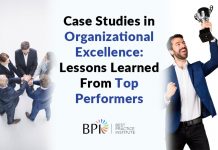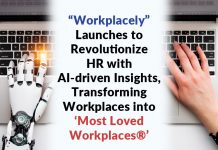You must have heard a gazillion times now about Big Data and how it continues to revolutionize the corporate world in multiple ways. While it is easy to comprehend online companies like Netflix and retail giants like Amazon and eBay to be early adopters of this innovation, you, as an HR manager of an enterprise, may be looking for the answer to one simple question: How can a business extract value from utilizing big data and what does it mean for an everyday employee?
Most experts suggest that the availability of efficient, executive-friendly HR data and analytics software and dashboards can help managers to extract value from exorbitant amount of organization and employee data.
Let’s take an in-depth look at how HR data and analytics can make a world of difference in managing your workforce, retaining valuable employees, mitigating risks, and leveraging from its many other benefits.
The Best Tools and Methods for HR Data and Analytics
Apart from collecting data on an employee, HR analytics provide insights into each organizational process by evaluating the data at hand, allowing the executives to improve the processes, make relevant decisions, and boost operational performance.
A survey conducted by Best Practice Institute showed that 82% HR executives use analytics to determine the best training and development approaches for their top talents. About 80% turn to analytics to determine the characteristics that demonstrate or predict team leader effectiveness. 73% said that the top retention analytic goal is determining who HR professionals should strive to keep based on projected future contribution.
There are several HR analytics tools and methods available in the market, but the following are most commonly used:
- Talent Analytics
- Workforce Analytics
- Workforce Analytics and Planning
- Capacity Analytics
- Predictive Analytics
To emphasize on the importance of HR data and analytics, here are a few examples of world renowned organizations that are using one or a combination of tools and methods.
About one-third portion of Google’s HR department comprises of data scientists. They are specialized in dealing with a wide range of analytic industries, from organizational psychology and operations to statistics and physics. These data experts are responsible for conducting experiments to get in-depth insights, which are used for establishing innovative programs to optimize Google’s HR functions.
Another good example is of Black Hills Corp, a 130-year-old energy conglomerate that doubled its workforce by utilizing HR analytics. It faced a number of challenges, such as the need for specialized skills, an aging workforce, and a lengthy training and development process for employee to achieve full competence. To mitigate risks and develop strategic action plans, the company used workforce analytics to calculate the number of possible retirees yearly, new hires, and the type of talent required for each vacating position.
Using the 70-20-10 Rule for HR Analytics Integration
One of the most successful ways to effectively integrate the data with the other aspects of your organizational development is through the 70-20-10 rule. In terms of human resource management, the 70-20-10 rule is used for determining the perfect balance for providing staff development and corporate learning opportunities. Here is the breakdown of what the figures in this rule indicate.
- 70% refers to experiential learning, which takes place through daily practice, tasks, and challenges.
- 20% refers to social learning, which takes place through mentoring and with the help of other people, like senior coworkers, etc.
- 10% refers to formal learning, which takes place through structured training programs and courses.
The implementation of the 70-20-10 rule helps HR executives in streamlining the learning culture within the organization by allowing them to create a system of continuous learning with the help of team leaders and managers.
SAP has been using the 70-20-10 rule for many years in different ways in its various departments for developing specific learning programs. Using the HR analytics and this rule, the company has made on-the-job, social, and formal learning a vital part of their training process. Moreover, the 70-20-10 rule also has its roots in the company’s key processes like employees’ annual development plans.
Widely Used Software and Dashboards for Measuring HR Data and Analytics
The HR analytics methods take into account several types of data to provide a complete picture of the organization. Some data applies to the company on the whole, while other data is specific to the workforce.
The following is a list of input data types important for an organization in order to transform predictive analytics into prescriptive analytics:
- Applicant tracking data, resumes, keywords, and applications
- Employee history within the organization
- External data, including company evaluations, salary surveys, ratings on 3rd party websites, etc.
- Internal and external LMS / learning data
- Informal and formal employee comments; “buzz around the office”
- Performance reviews
- Retention data
- Recruiting data, including the number of candidates, number of openings, time sensitivity to fill a job opening, etc.
- Salary data
- Surveys and interviews
For effectively measuring and implementing the most important analytics and data, HR dashboards can prove to be very helpful tools. They are specifically designed to analyze performance and identify areas requiring improvements. The following are some of the widely used and recommended HR dashboards that are being used by industry giants and enterprises.
- Workday
- Jobvite
- OfficeVibe
- Visier Workforce Analytics
- SAP HR dashboard
- WorkmateHR
- XCD HR
There are still many enterprises and large corporations facing difficulty in adopting to HR analytics methods. However, with effective utilization of actionable analytics, managers and leaders can use talent data from HR analytics for identifying revenue streams, reducing workforce costs, executing business strategy, and mitigating potential risks.










